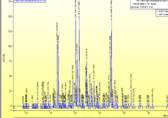WP4
Evaluating and Developing Indicators for Biodiversity
WP leader: Bryan Griffiths (Bryan.Griffiths @ sruc.ac.uk) SRUC - Scotlands Rural College, United Kingdom.
Objectives
The Indicators Workpackage (WP4) is designed to develop policy-support cost-effective biological indicators, such as phospholipid fatty acid profiles or soil nematodes:

to achieve the following objectives:
- Recommend potential indicators for biodiversity in different climatic regions;
- Incorporate novel indicators resulting from WP1, WP2, and WP3;
- Evaluate indicators at selected long-term observatories;
- Assess applicability to the key ecosystem services;
- Ensure policy relevance by mapping to threats;
- Develop cost-effective and policy-relevant indicators of soil biodiversity.
Description of work
Previous research at the European level has provided a selection of indicators for the characterisation of soil and WP4 will continue this robust assessment of biological indicators with the inclusion of emerging techniques such as high-throughput molecular methods. A primary task will be to synthesise the available data, combine it with techniques under consideration elsewhere in EcoFINDERS (see WP1, WP2, and WP3) and recommend potential biological indicators for soil biodiversity and activity, relevant to policy. A vigorous sifting process will select indicators meaningful and useful to end-users, such as policy makers and land managers.
Approach
In WP4, we will combine studies based on the EcoFINDERS LTOs, national data-sets, European scale mapping, state of the art modelling and the accumulated expertise of the multi-disciplinary consortium. By cross-comparison with the threats identified in the pending Soil Framework Directive which are known to have an impact on soil biodiversity, EcoFINDERS will determine whether the indicators have sufficient coverage, ensure relevance to policy, and provide evidence for the economic implications associated with those indicators (in collaboration with WP5).
Our approach is to:
- Identify potential indicators;
- Evaluate them across the LTOs,
- Test their relevance to ecosystem services;
- Assess and map their response to threats against soil biodiversity;
- Ascertain cost-effectiveness and recommend a suite of biological indicators.